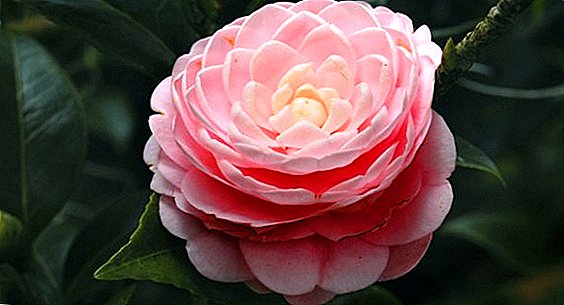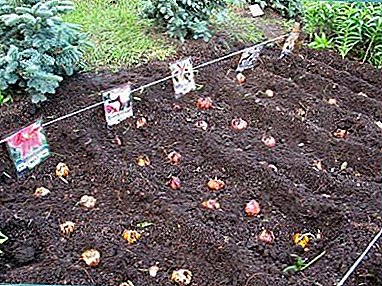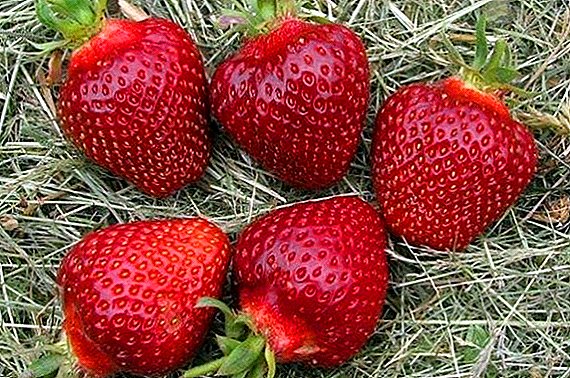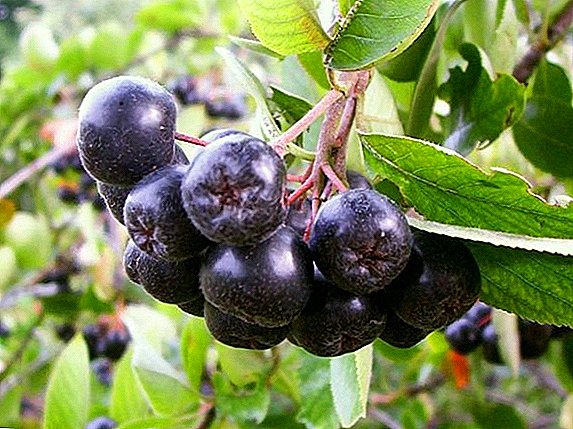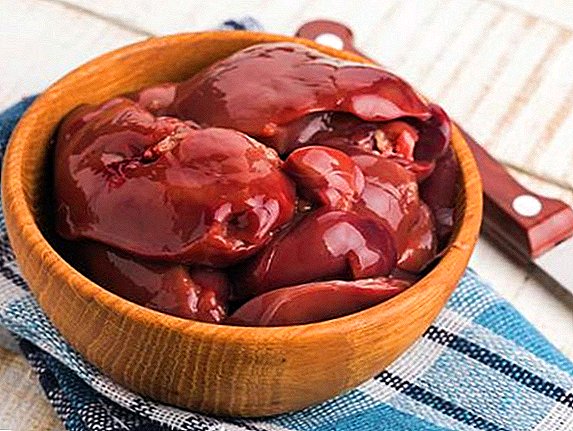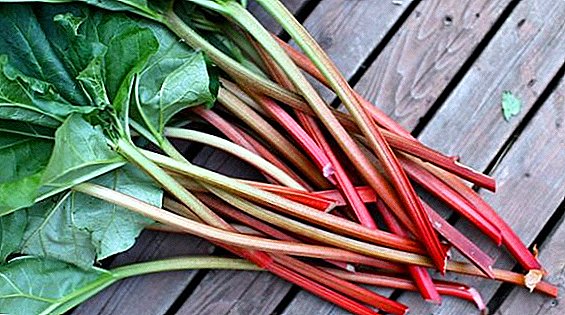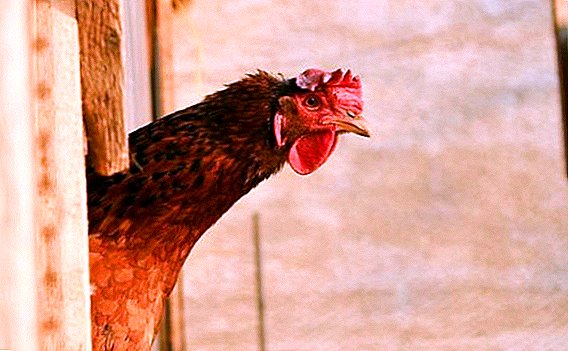 It is not always possible to create ideal conditions for chickens in chicken coops. The maintenance of certain breeds may be limited to local climatic conditions or financial side, when it is unprofitable or impossible to create special conditions for poultry for technical reasons. In these cases, you can breed breeds of chickens that are unpretentious.
It is not always possible to create ideal conditions for chickens in chicken coops. The maintenance of certain breeds may be limited to local climatic conditions or financial side, when it is unprofitable or impossible to create special conditions for poultry for technical reasons. In these cases, you can breed breeds of chickens that are unpretentious.
Unpretentious breed of chickens
Breeds that are unpretentious to the conditions of detention, are available in all categories of this poultry: egg, meat, universal (meat and egg). Let us examine in more detail the advantages of these breeds in each of the categories.
Laying hens
The main characteristic of egg chickens is their egg production. There are a lot of breeds of such orientation, among them there are a lot of those, whose representatives do not suffer from emaciation.
Did you know? Layers of the South American breed of araucana produce eggs with blue or greenish shells. The coloring of the shell does not affect the value of the eggs, and such coloring does not give them any additional qualities.
Leggorn white
Leghorn can be called a reference egg breed, it is known from the XIX century and has Italian origin. Of all the varieties of leggorn, white leggorn are considered to be the most unpretentious.  They have the following advantages:
They have the following advantages:
- high productivity (300 eggs per year and above);
- the ability to acclimatize to different climatic conditions; they are easily maintained in both the southern and northern regions;
- begin to sweep from about 5 months of age;
- this bird can be kept in cages, in a not too spacious or even cramped hen house;
- white leggorn productivity is not so dependent on feed quality as, for example, dwarf leggorn.
We advise you to read about breeding and keeping chickens at home for beginners.
Hisex
This cross was bred by Dutch breeders. The efforts of breeders were aimed at securing high productivity in poultry while reducing its weight. These tasks were carried out, and in the process of selection were formed 2 types of highsex: white (white) and brown (brown). 
Hisex white
The white variety is distinguished by its smaller mass and greater vitality and simplicity. These chickens better adapt to the characteristics of the climate, their young live almost completely.
Among the advantages of highsex white, we note:
- excellent egg production (320 eggs per year);
- high resistance to infections, helminths, fungal diseases;
- needs less feed than a larger bird.

Hisex Brown
Representatives of the brown Haysex species have a greater mass than the white relatives. Moreover, their egg productivity is higher, although they need more feed. Survival rate of young among brown Hisex is somewhat lower than white.  The advantages of this variety are as follows:
The advantages of this variety are as follows:
- excellent egg production (340 eggs per year);
- good adaptability to different climates, including low temperatures;
- resistance to parasites and various diseases: fungal, infectious, catarrhal.
It is interesting to get acquainted with the rating of egg breed chickens.
Loman brown
Chickens broken Brown were bred by German breeders in the 70s of the last century. In the process of selection of broken Brown, the requirement was laid to preserve the high productivity of the bird, regardless of the conditions of detention.  Lohman Brown boasts such virtues:
Lohman Brown boasts such virtues:
- high productivity (320 eggs per year);
- the rapid maturation of the young - the chickens start rushing around the 130th day of life;
- lower feed intake compared to many other breeds;
- good adaptability to climate peculiarities (it can live even at low temperatures), although in order to ensure the best egg production, it is advisable to avoid drafts and warm up the chicken coop.
Important! Loman Brown alone, without a significant decrease in productivity in the offspring, can not be diluted. Eggs for incubation or youngsters are purchased from poultry farms or imported directly from Germany.
Rhode Island
This breed was bred in the USA in the 19th century and is now one of the most common.  Rhode Island has the following positive qualities:
Rhode Island has the following positive qualities:
- good egg production (180 eggs per year or more), and productivity in the cold season almost does not fall;
- very good endurance, the ability to acclimatize to different types of climate - this bird can live in an unheated barn, but it feels better in a warmed chicken coop without drafts;
- the possibility of cellular content.
There are decorative breeds of chickens with an unusual appearance that can become a real decoration of the yard.
Russian white
Selection work on the creation of Russian white was carried out in the USSR, since the 20s of the last century. The breed was finally formed in 1953. When it was created, in addition to high egg production and increased body weight, increased viability was laid.  The advantages of Russian white include:
The advantages of Russian white include:
- good productivity (on average 220-230 eggs per year);
- excellent tolerance to low temperatures and not very comfortable conditions of detention;
- unpretentiousness to the composition of the feed;
- high resistance to various diseases, including oncological and benign formations.
Check out also the collections of breeds of chickens with red and white plumage.
Kotlyarevskaya
This breed was bred in the North Caucasus in the 90s of the last century at the eponymous breeding plant.  Its advantages include such features:
Its advantages include such features:
- good and long, for up to 5 years, egg production (240 eggs per year);
- unpretentiousness to food - you can feed and boiled potatoes with vegetables and greens;
- good resistance to low temperatures (although at a temperature below -5 ° C, birds can still start having health problems);
- high resistance to various diseases.
Learn more about Kotlyarevskaya chickens.
Pushkin striped and motley
This breed is registered quite recently, it has been listed in the register of the State State Commission since 2007. Bred by St. Petersburg breeders.  Pushkin hens have the following positive features:
Pushkin hens have the following positive features:
- high productivity (270 eggs per year or more);
- resistance to low temperatures - in principle, these birds can be kept in an unheated hen house (but it is still undesirable to allow a temperature drop below -5 ° C);
- unpretentiousness to nutrition (but to ensure maximum productivity, special feed must be used);
- resistance to infectious and catarrhal diseases.
Learn all about Pushkin's chickens.
Dominant
Cross dominant is the fruit of the efforts of Czech breeders. One of the objectives of the selection was the breeding of birds with increased resistance to adverse conditions, which was completely successful.  The dominant has such useful features:
The dominant has such useful features:
- excellent egg production (310 eggs per year);
- lack of nutrition;
- good tolerance of both cold and heat;
- increased disease resistance.
It is interesting to get acquainted with the selection of breeds of chickens with the largest eggs.
Meat-egg breeds of chickens
Among the meat-egg chickens there are also those that are unpretentious and suitable for keeping in relatively harsh conditions. Let us consider in more detail the merits of some of these breeds.
Adler silver
Adler silver was bred by Kuban breeders in the 60s of the last century.  Its advantages are:
Its advantages are:
- good productivity (190 eggs per year), almost independent of the season;
- good meat quality, coupled with a fairly large mass of poultry (up to 2.7 kg - chicken, up to 4 kg - rooster);
- good tolerance of both cold and heat;
- the possibility of maintenance both in the yard and in cages;
- disease resistance.
Important! Sometimes under the guise of Adler silver sell chickens Sussex Colombian color, looks like it. In the industrial poultry industry, Adler chickens are currently not used, they are bred in small farms or households.
Kuchinsky anniversary
This breed is the brainchild of breeders of the Moscow region, it was created in the 90s of the last century. The main problem of Kuchinskaya jubilee is its tendency to obesity. In obese birds, egg production is reduced, and it is also more vulnerable to disease.  Of the advantages of the Kuchinskaya jubilee, we note the following:
Of the advantages of the Kuchinskaya jubilee, we note the following:
- excellent egg production (up to 240 eggs per year);
- the mass of chickens reaches 3 kg, and roosters - 4 kg;
- resistance to cold, at a temperature not lower than +4 ° C, egg production is not reduced;
- the possibility of growing as a walking and in cages.
Read also about the benefits and culinary use of chicken meat, giblets, eggs, the use of eggshell.
Meat breeds
Breeds, unpretentious to the conditions of detention, there are also among meat chickens. With the features of some of them will take a closer look.
Cornish
This is the world's most popular meat chickens. The second name is Cornish. They were bred at the end of the XIX century, but the improvement of the breed continued for many decades.  Of the merits of the Cornish breeders note the following:
Of the merits of the Cornish breeders note the following:
- very fast weight gain (gaining up to 2 kg in 6-8 weeks);
- due to the peculiarities of the body structure they give a lot of white meat;
- can be grown both in cages and on walking;
- undemanding to diet.
Did you know? The first broilers were obtained by crossing the Cornish breed (Cornish) and white Plymouth in the 30s of the last century. Subsequently, in breeding programs began to use other chickens.
American White Plymouths
The history of the breed stretches from the XIX century. The final standard of the Plymouths was set at the beginning of the 20th century.  We list their advantages:
We list their advantages:
- rapid weight gain and considerable weight (up to 3.5 kg in chickens and up to 5 kg in roosters);
- Because of the wide powerful breast from this bird get a lot of white diet meat;
- good adaptability to different climatic conditions;
- disease resistance.
Poultry farmers reviews


As you can see, there are many breeds of chickens, undemanding to the conditions of detention. Some of them, in addition to their simplicity, are highly productive. Therefore, if there is no opportunity to create special conditions for poultry, you can choose to keep any of these breeds.


